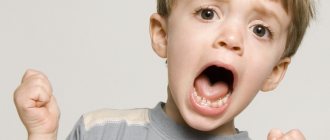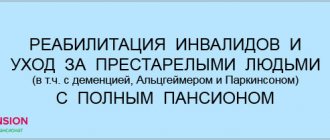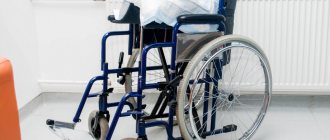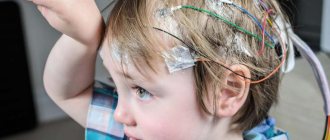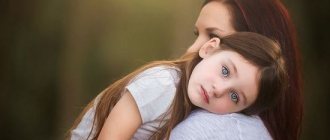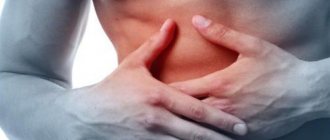We all have something that worries us or makes us nervous in our daily lives. This anxiety can range from mild excitement before meeting someone you haven’t seen for a long time until the onset of “bear sickness” before the exam. In principle, both are normal for a person.
But what if this nervousness becomes constant and begins to interfere with your normal life? Worried thoughts turn into anxious thoughts, anxiety overwhelms you, and thoughts become more and more intrusive?
These are signs of uninvited neurosis, and it’s good if it’s just neurosis and not a more serious mental disorder.
If something similar occurs among family members, pay special attention to the child’s well-being. Firstly, due to hereditary predisposition, he falls into a risk group. Secondly, he absorbs the behavior of adults like a sponge, copying, assimilating and repeating patterns of neurotic behavior.
CHARACTERISTIC SIGNS OF NEUROSIS IN INFANTS:
- Severe redness of the skin when screaming or crying
- Mild excitability and movement disorders
- Urinating too frequently
- Pallor, frequent colic
CHARACTERISTIC SIGNS OF NEUROSIS IN CHILDREN/TEENAGERS:
- Suspiciousness, anxiety about ordinary reasons
- Difficulty switching attention
- Obsessing over unpleasant events or experiences. Obsessive symptoms often occur in adolescence, later developing into obsessive-compulsive disorder.
- Obsessive movements, actions
- Obsessive fears
- Enuresis
- Thumb sucking
- Nail biting
- Stuttering
- Frequent tantrums for no serious reason
- Withdrawal, lethargy, as evidence of exhaustion from internal experiences
- Sleep disorders
- Irritability
- Anger
- Feeling of constant hostility from the outside world
- Feeling vulnerable
- Excessive shyness
General information
The concept of “neuroses” includes various disorders of the central and autonomic nervous system that arise under the influence of acute or chronic stress. Higher centers of nervous activity regulate all functions: breathing, heartbeat, digestion, emotions, excretory and sexual activity. Accordingly, violations can occur in all systems.
The clinical picture of neuroses in children and adolescents is varied and includes emotional and physical disorders. The diagnosis is established after excluding similar diseases of the internal organs and examining the structure and functions of the nervous system.
Neurosis differs from an organic (irreversible) disease in the absence of a morphological substrate for the disease. That is, during a laboratory or instrumental examination, no changes are detected, but clinical manifestations (pain, discomfort) occur. The prevalence of neuroses is very high, reaching 25% of all diseases.
Symptoms of neuroses in children
The symptoms of childhood neuroses are intertwined and have some differences from the manifestations in adults. The most common signs are:
- increased excitability;
- fast fatiguability;
- persistent, persistent headaches of moderate strength;
- sleep disorders;
- anxiety or restlessness;
- periodic attacks of palpitations, sometimes with shortness of breath;
- tearfulness;
- causeless change of mood;
- tendency to constipation;
- tearfulness;
- deterioration in school performance;
- headache (sensation of a “hoop”) and other disorders that do not fit into the usual clinical picture of a particular disease.
Most often parents encounter the following symptoms:
- fears;
- hysterics;
- stuttering;
- sleep disorder;
- nocturnal enuresis (urinary incontinence).
The combination of signs of neurosis in children largely depends on its type.
Asthenic neurosis (neurasthenia)
It occurs more often in timid children; the provoking factor is stress or neuropsychic fatigue. Symptoms of anxiety come to the fore: fears, sleep disorders. Often there is increased sensitivity to noise or bright light. An exacerbation is accompanied by pain in the head or heart area, nausea and vomiting, intestinal disorders, and sweating.
Hysterical neurosis
The pathology is typical for children with demonstrative behavior who like to play in public. A classic sign of the disorder is hysterics, accompanied by loud, demonstrative screams, falls, etc. In infants and preschoolers, physiological symptoms come to the fore: rolling up when crying, urinary or fecal incontinence. In children who already know how to speak, mutism occurs - the cessation of speech in certain situations.
Obsessive-compulsive disorder
Occurs in overly responsible children who have a tendency to be pedantic and adhere to principles. The pathology is characterized by the emergence of pronounced phobias, which provoke obsessive movements, as well as various rituals that help to calm down a little.
Depressive neurosis
The child develops obvious signs of depression and apathy: lack of emotions, poor facial expressions, depressed mood, desire to be alone. Appetite decreases and sleep disturbances occur. As a rule, the provoking factor is a dysfunctional, traumatic situation in the family.
Systemic neuroses
Each of the disorders in this group is characterized by the occurrence of one, or less often two, symptoms. Such conditions include isolated tics (twitching of individual muscles), enuresis, encopresis, stuttering, etc.
The main types of neurological pathology in children of the first year of life
To identify diseases of the nervous system, manifested by a specific delay in psychomotor development, it is important to assess the neurological and psychopathological signs accompanying the developmental delay. The age-related immaturity of the nervous system of a child in the first year of life determines the fragmentation and undifferentiation of the signs observed in him. The body, especially a newborn and infant, reacts to various hazards with a limited number of typical reactions, the nature of which primarily depends on the age phase of neuropsychic development. Below are the main options, reflecting mainly the type of neuropsychic reaction in the first year of life.
- GENERAL INSPECTION OF A NEWBORN - WHAT PARENTS SHOULD PAY ATTENTION TO
- PERINATAL BRAIN DEPRESSION (NERVOUS HYPOEXCITABILITY)
- PERINATAL BRAIN HYPEREXCITABILITY
- INTRACRANIAL PRESSURE REGULATION DISORDER (HYPERTENSION-HYDROCEPHAL SYNDROME)
- CONVIVUS SYNDROME
- CEREBRASTHENIC SYNDROME
- MOVEMENT DISORDER SYNDROMES (MUSCULAR DYSTONIA, Cerebral Palsy)
General examination of a newborn - what parents should pay attention to
Considering the high incidence of perinatal pathology of the nervous system and the possible difficulties of obtaining qualified specialized care, there is no doubt that there is an urgent need for parents to receive relevant popular scientific information.
What can we see for ourselves? - General examination of the newborn The child normally breathes rhythmically, makes automatic movements of the limbs in sufficient volume and symmetrically. The slightest restrictions in movement in the arms or legs should be the basis for a targeted study - are there any movement disorders? The nature and volume of the baby's crying is important. The posture of a newborn can tell a lot. In some cases, the child is lethargic, inactive, and sometimes literally lying flat. In other cases, on the contrary, the tone in the limbs is evenly increased - when swaddling, the peculiar stiffness of the limbs immediately attracts attention. It is very important not to miss even small convulsive twitches during examination.
Examination of a newborn's head reveals a lot. A birth tumor is typical for most newborns. The larger the size of this tumor, the more difficult the birth of the child was, and such a child should be the subject of a particularly careful examination. Some children notice bruises on the face, neck, and torso as a result of a traumatic birth - in these cases, neurological symptoms are also more often detected. Head deformations (the so-called “configuration”) almost always indicate a birth injury to the skull, and among these children craniocerebral symptoms are much more common, which is understandable and easily explainable. In everyday practice, cephalohematoma is sometimes underestimated, usually only because it is “common” and “located outside the skull.” Indeed, we are talking about a subperiosteal hematoma, sometimes quite significant in size. It is indeed common, but this cannot serve as an argument against it - it is an injury, and what is important for the diagnosis is not even the cephalohematoma itself, but what it indicates - at the level of such a hematoma, there are undoubtedly areas of microhemorrhages in the underlying areas of the brain , which, regardless of the patient’s age, indicate cerebral contusion. One of the important indicators of difficulties with childbirth is such a sign as the location of the skull bones on top of each other. This small dislocation usually does not lead to damage to the underlying brain tissue, but it certainly indicates that the fetal skull passed through the birth canal, experiencing great resistance - in these cases, signs of damage to the nervous system are often revealed.
The condition of the fontanelles plays a major role in assessing the child’s condition: tension and bulging of the fontanelles is a very serious symptom of increased intracranial pressure. The size of a newborn's head tells the doctor a lot: signs of hydrocephalus, if detected from the first days of life, usually indicate intrauterine brain pathology, while the gradual development of hydrocephalus can often be a consequence of birth damage to the brain.
Here it should be noted the catastrophic frequency of the unjustifiably expanded diagnosis of “hypertensive-hydrocephalic syndrome”, which in many hospitals and clinics is made with or without reason. The worst thing is that in such cases, massive and long-term therapy with diacarb immediately begins, which is not only unjustified, but exhausting for the child.
In some newborns, the head is smaller than normal, and the brain part of the skull is smaller than the facial part - sometimes this indicates intrauterine and genetic pathology (microcephaly) and, unfortunately, has serious consequences. Recently, more and more often there are children with very early closure of the fontanelle, while the growth rate of the head in such newborns clearly lags behind the norm.
The sign of a “short neck” is quite common, and it is usually very demonstrative and striking. It seems that the child's neck is very short (although there is no anatomical defect), the head seems to be located directly on the shoulders. With age, the degree of these manifestations gradually decreases. In these same children, attention is drawn to the severity of the transverse folds on the neck with persistent weeping in the area of these folds. It can be assumed that the symptom of a short neck occurs as a result of overextension of the neck during difficult childbirth, followed by a reflex contraction of the neck like the “accordion phenomenon”. Later, it is these children who develop another very important sign - a sharp protective tension in the cervical-occipital muscles.
Assessing the condition of the abdominal wall is very important. It is known that many newborns have a flabby, flat stomach, and in these cases it is impossible to exclude a violation of the contractility of the abdominal muscles as a result of birth injuries to the thoracic spinal cord. This is especially demonstrative when the lesion is predominantly unilaterally localized - the “weak” half of the abdominal wall protrudes slightly, the navel moves when screaming. With a bilateral lesion, it is more difficult to judge. The following test can be useful: if such a newborn cry is weak, then when the doctor’s hand presses on the child’s stomach, the voice becomes much louder.
Priapism, a spontaneous erection of the penis in a newborn, should be considered equally unfavorable. Pediatricians often encounter this sign, but do not know how to interpret it. At the same time, in adult neurology, this symptom is well known and indicates significant spinal pathology.
We tried to consider some possibilities for a general examination of a newborn to look for signs that would suggest one or another neurological pathology. Each of the above signs cannot be considered conclusive, but taken together they acquire great diagnostic meaning. In any case, only a doctor specializing in neonatal neurology can resolve your doubts.
<< Return to contents
Perinatal cerebral depression (nervous hypoexcitability)
Low motor and mental activity of the child, which is always below his motor and intellectual capabilities; high threshold and long delayed period for the occurrence of all reflex and voluntary reactions. Depression is often combined with low muscle tension and reflexes, slow switching of nervous processes, emotional lethargy, decreased motivation and weakness of volitional efforts.
Hypoexcitability can be expressed to varying degrees and manifest itself either episodically or persistently. The episodic occurrence of the syndrome is characteristic of somatic diseases, especially pathologies of the gastrointestinal tract, accompanied by malnutrition. Sometimes mild but persistent manifestations of the syndrome may be due to the type of higher nervous activity. The predominance of cerebral depression in the first months of life is observed in cases of prematurity, in children who have suffered oxygen starvation, or intracranial birth trauma. Severe and persistent depression is often accompanied by delayed psychomotor development, which acquires some characteristic features.
Delayed psychomotor development in hypodynamic syndrome is characterized by a delayed formation of all conditioned reflexes. During the neonatal period and in the first months of life, this manifests itself in a lag in the development of the conditioned reflex during feeding; subsequently, the development of all food conditioned reflexes is delayed (reflex to the position of feeding, the appearance of a breast or a bottle of milk, etc.), the development of food, and then visual and auditory dominance and sensitive local reactions is delayed. Particularly characteristic is the delay in the development of chain motor combined reflexes, which most clearly begins to manifest itself from the second half of life! Such a child at the age of 6-8 months does not pat a blanket or toy with his hand, does not knock an object against an object, does not repeatedly throw out an object by the end of the year, does not put an object into an object. This is also manifested in vocal reactions: the child rarely repeats sounds and syllables, i.e., performing single movements and pronouncing individual sounds, he does not strive to repeat them. As a result of the delay in the formation of conditioned reflexes on the combination of a word with an object or action in both a specific and non-specific situation, the initial understanding of speech and submission to verbal commands in these children occurs at a later date. At the same time, a lag in such functions as object-manipulative activity, crawling, babbling, speech understanding, and one’s own speech is formed.
In the case of hypoexcitability, the formation of positive emotional reactions is noted at a later date. This manifests itself both when communicating with an adult and in the spontaneous behavior of a child. During the newborn period, when communicating with an adult, such children usually lack oral attention; at the age of 2 months, the reaction of joyful animation at the sight of an adult and a gentle voice is not expressed or is weakly expressed. Often, instead of facial expressions of animation, you can only see a reaction of concentration in a child. A smile appears after 8-9 weeks; its appearance requires a complex of stimuli, including proprioceptive ones, and their repetition; the latent period of a smile in response to a stimulus is extended.
While awake, the child remains lethargic and passive; indicative reactions occur mainly to strong stimuli. The reaction to novelty is sluggish and in most cases has the character of passive amazement, when a child with wide open eyes remains motionless at the sight of a new object, without making active attempts to approach it or grab it. The longer the period of absence of active wakefulness and indicative-exploratory behavior, the more pronounced the lag in psychomotor development.
The revival complex, one of the main manifestations of active forms of emotional behavior in a child in the first months of life, is either absent with hypoexcitability or manifests itself in a rudimentary form: a weak facial reaction without sparkle in the eyes and vocal reactions, or the absence of a motor component, clear vegetative manifestations. Active negative emotional reactions are also weakly expressed and have almost no effect on the child’s general behavior.
Features of the emotional sphere determine the secondary underdevelopment of intonation expressiveness of vocal reactions, as well as the specifics of the formation of sensory functions. Thus, at the second age stage, a hypoexcitable child usually fixes and tracks an object well, but the movements of his eyeballs following a moving object do not begin immediately, but after a certain latent period, as is typical for a newborn: the eyes seem to constantly catch up with the object moving in the field. view subject. These visual reactions are variable, and their occurrence often requires special optimal conditions: a certain state of the child, sufficient strength and duration of the stimulus, etc. In the second age period, these reactions most clearly and often occur not in a supine position, but in a vertical position. position in the arms of an adult. A feature of visual perception with hypoexcitability at this age stage is also that the child spontaneously almost does not examine surrounding objects, he does not actively search for a stimulus. A hypoexcitable child usually turns his head and eyes towards an invisible sound source after repeated repetition and a long latency period; auditory perception, like visual perception, usually does not acquire a dominant character.
Delayed psychomotor development in hypoexcitability syndrome is characterized by developmental disproportion, which manifests itself in all forms of sensory-motor behavior. Thus, with sufficient development of differentiated emotional reactions to “friends” and “strangers,” the child shows active joy in communicating with friends and protest in communicating with strangers, i.e., at the age stages, insufficient communication activity remains pronounced. Along with the timely development of individual sensory functions, there is a lag in the formation of intersensory connections, especially in the tactile-kinesthetic analyzer system, so hypoexcitable children later begin to examine and suck their hands, feel toys, and their hand-eye coordination is formed with a delay. The lack of active exploratory behavior is expressed in the disproportionality of the development of visual perception. Therefore, with sufficient development of differentiated visual perception in a child, the automatic nature of object tracking can be maintained.
With a dynamic quantitative assessment of age-related development, a child with hypoexcitability syndrome loses 7-9 points at different periods, with the maximum loss observed at the age of 4-5 months, when normally the first intersensory connections and active forms of behavior should be actively formed.
<< Return to contents
Perinatal cerebral hyperexcitability
Motor restlessness, emotional instability, sleep disturbance, increased innate reflexes, increased reflex excitability, a tendency to pathological movements, often in combination with a reduced threshold of convulsive readiness. Hyperexcitability is not causally specific and can be observed in children with perinatal pathology, some hereditary enzymopathies and other metabolic disorders, congenital childhood nervousness and minimal brain dysfunction. These children may not have a pronounced lag in psychomotor development, but with a thorough examination it is usually possible to note some mild deviations.
Disorders of psychomotor development in hyperexcitability syndrome are characterized by a lag in the formation of voluntary attention, differentiated motor and mental reactions, which gives psychomotor development a peculiar unevenness. By the end of the first year of life, such children usually have well-expressed cognitive interest in the environment and active forms of communication, and at the same time, with strong emotions, a general complex of revival with diffuse motor reactions may appear.
All motor, sensory and emotional reactions to external stimuli in a hyperexcitable child arise quickly, after a short latent period, and fade away just as quickly. Having mastered certain motor skills, children constantly move, change positions, constantly reach for and grab objects. At the same time, manipulative research activities, imitative games and gestures are poorly expressed. Children usually show a keen interest in their surroundings, but increased emotional lability often makes it difficult for them to communicate with others. Many of them have a long-term reaction of fear when communicating with unfamiliar adults with active reactions of protest. Typically, hyperexcitability syndrome is combined with increased mental exhaustion. When assessing the age-related development of a hyperexcitable child, they are usually classified not as a delay group, but as a “risk group” if hyperexcitability is not combined with other neurological disorders.
<< Return to contents
Postpartum intracranial pressure regulation disorder
Hypertensive-hydrocephalic syndrome
Increased and unstable intracranial pressure in young children is often combined with hydrocephalic manifestations, which are characterized by the expansion of certain intracerebral spaces as a result of the accumulation of excess amounts of cerebrospinal fluid. Increased intracranial pressure in newborns and infants can be transient or permanent, hydrocephalus can be compensated or subcompensated, which, along with the anatomical and physiological characteristics of early age, determines a wide range of clinical manifestations.
In most cases, with hypertensive-hydrocephalic syndrome, there is an increase in the size of the head, which is determined by dynamically measuring its circumference and comparing it with the dynamics of height and body weight. An increase in head circumference that exceeds normal by more than 2 sigma deviations is considered pathological. As the head circumference increases, a disproportion between the cerebral and facial skulls is revealed. Enlargement of the skull can be asymmetrical due to a unilateral pathological process or a defect in child care.
An increase in intracranial pressure in infants is also accompanied by a divergence of cranial sutures, which can be determined by palpation and x-ray examination. Dehiscence of the sutures occurs quickly with progressive hydrocephalus and more slowly when intracranial pressure is mildly increased or has stabilized. When percussing the skull o.
Another sign of increased intracranial pressure is bulging and enlargement of the large fontanel. With severe hydrocephalic syndrome, the small and lateral fontanelles may be open. It should, however, be borne in mind that changes in cranial sutures and fontanels are detected only at a certain stage of development of the pathological process, therefore their absence during a single examination cannot be regarded as evidence against the presence of hypertensive-hydrocephalic syndrome.
With increased intracranial pressure in newborns and infants, the venous network of the scalp expands and the skin on the temples becomes thinner.
Neurological symptoms in hypertensive-hydrocephalic syndrome depend both on the severity of the syndrome and its progression, and on the brain changes that caused it. First of all, the behavior of children changes. They become easily excitable, irritable, the cry is sharp, shrill, sleep is superficial, children often wake up. This complex of signs is more typical for the predominance of hypertension syndrome. With hydrocephalic syndrome, on the contrary, children are drowsy in most cases. Decreased appetite, regurgitation, and vomiting lead to a decrease in body weight. Damage to the cranial nerves is manifested by the “setting sun” symptom, convergent strabismus, and horizontal nystagmus.
Muscle tone changes depending on the severity of intracranial hypertension and the course of the disease. In the first months of life, with increased intracranial pressure, especially if it is accompanied by hyperexcitability and the volume of the skull is not increased, muscle tone is often increased, tendon reflexes are high, with an expanded zone, and foot clonus is sometimes observed. In hydrocephalic syndrome with moderate intracranial hypertension, muscle hypotonia is initially observed. If hydrocephalus progresses, you can later notice an increase in muscle tone, first in the legs. This is due to the stretching of the pyramidal fibers of the parasagittal region due to the enlargement of the ventricles of the brain.
In newborns and infants with hypertensive-hydrocephalic syndrome, hand tremor is often pronounced. It can be frequent, small-scale or rare, large-scale, such as hemibalism. Seizures are observed much less frequently; they usually occur with a rapid increase in intracranial hypertension.
Changes in the fundus of the eye in young children do not necessarily develop due to the possibility of an increase in the volume of the skull due to divergence of the cranial sutures. However, in some cases, one can detect dilation of the veins, blurring of the boundaries of the optic nerve nipple, and later, with the progression of hydrocephalus, its swelling and atrophy.
Determination of cerebrospinal fluid pressure during lumbar puncture, which is normally 50-100 mmH2O in newborns, is important for diagnosing hypertension syndrome. Art., for breastfeeding - 60-150 mm of water. Art. With hypertension syndrome, cerebrospinal fluid pressure in infants can increase to 200-3Q mm of water. Art. and higher. The composition of the cerebrospinal fluid in hypertensive-hydrocephalic syndrome depends on the characteristics of the pathological process as a result of which it arose, the nature of the course of the syndrome, and the stage of its development. More often, a normal composition of the cerebrospinal fluid is observed, but there may be protein-cell or cell-protein dissociation.
Along with clinical, ophthalmological and liquorological data, the following are important for the diagnosis of hypertensive-hydrocephalic syndrome: transillumination of the skull, EchoEG, craniography, computed tomography.
The transillumination method is safe, it can be performed repeatedly and on an outpatient basis. The principle of the method is to propagate light rays in a space filled with liquid. Normally, in newborn infants, a ring of luminescence with a width of 0.5 to 3 cm appears around the tube with a light source, depending on the density of the bones of the skull. The most intense glow is observed in the frontal regions (up to 3 cm), the least in the occipital region (0.5-1 cm). An increase in the boundaries of the luminescence occurs when the subarachnoid space expands to 0.5 cm. Transillumination of the cavities of intracerebral tissue or ventricles is possible only when the thickness of the brain tissue is less than 1 cm.
In children with external and internal hydrocephalus, a symmetrical glow is detected. Asymmetrical luminescence occurs with unilateral expansion of the ventricle and suoarachnoid space.
On EchoEG with hydrocephalus, an increase in the number of reflected echo signals, ventricular index (normal 1.9) and amplitude of echo pulsations is recorded. In the case of asymmetric enlargement of the ventricular system, the m-exo is displaced in the direction opposite to the enlarged ventricle.
In infants with a slight increase in intracranial pressure without dehiscence of cranial sutures, craniography does not provide sufficient information for diagnosis. At the same time, it is the craniogram that can provide objective evidence of increased intracranial pressure. With the progression of hydrocephalus, craniograms show divergence of the cranial sutures, most often the coronal and sagittal sutures, already after 2-3 weeks. Asymmetrical expansion of the cranial sutures indicates the localization of the lesion. Thinning of the bones of the cranial vault and pronounced digital impressions in children of the first year of life indicate the relative duration of the process that led to the limitation of intracranial space.
Computed tomography is a safe and painless method of x-ray examination of the skull and brain structures, the radiation exposure is minimal (0.3 load when taking a regular x-ray of the skull). For young children, the significance of these advantages is very great. In addition, it can be performed on an outpatient basis. Computed tomography gives a clear picture of the size of the ventricles of the brain in hydrocephalus, as well as the presence and location of lesions.
The depth and nature of the delay in psychomotor development in hydrocephalus and hypertension syndrome vary widely depending on the primary changes in the nervous system that caused hydrocephalus, and those secondary to increasing hypertension. If the destructive changes in the brain that caused hydrocephalus were pronounced, even if hydrocephalus is compensated by conservative or surgical measures, the child’s development is significantly delayed. At the same time, the addition and progression of hypertensive-hydrocephalic syndrome in any pathology makes the developmental delay even more pronounced and peculiar, despite compensation of the primary process. Finally, with timely effective compensation of both the primary process and hydrocephalus, a slight developmental delay, often partial, is quickly eliminated.
<< Return to contents
Causes of neuroses in children
Currently, it is difficult to identify specific causes of the development of childhood neuroses. Most often, the pathological process occurs against the background of the complex influence of various factors:
- socio-psychological: frequent conflicts in the family, atypical family roles for parents, lack of communication with peers, etc.;
- socio-cultural: bullying in a team, excessively stressful rhythm of life, etc.;
- socio-economic: unsatisfactory living conditions, absence of a second parent, early start of kindergarten;
- biological: hereditary characteristics of the psyche, birth trauma, smoking or drinking alcohol by the expectant mother during pregnancy, illness of the mother during pregnancy, cerebral palsy, etc.;
- exhaustion of the nervous system: constant nervous overload, too many clubs and tutors, lack of sleep, etc.
Diagnosis of neurosis
First of all, the baby is examined by a pediatrician to rule out diseases of the internal organs.
Next, the neurologist continues the diagnostic search, excluding damage to the nervous system. A neurologist may prescribe additional instrumental examination methods: EEG, ultrasound of head and neck vessels, MRI, somnography (sleep phase study). When organic causes are excluded, the child’s personality traits are examined by a medical psychologist during a pathopsychological examination. Intelligence, thinking, will, emotions are explored. The psychological conclusion reflects the structure of the personality - temperament, character, skills, abilities, features of the course of mental processes.
Infections
In the genesis of obsessive-compulsive disorders , the role of an infectious disease is primarily played by streptococcal (beta-hemolytic streptococcus) infection of the nasopharynx.
Typically, patients suffering from streptococcal infections begin to show signs of obsessive-compulsive disorder 3-4 years earlier than other children suffering from obsessive disorders, for example, arising from organic brain damage due to an unsuccessful birth.
The role of infection is indicated by exacerbation of symptoms in the evening and the clearly recurrent nature of the disease. The doctor should also take into account the fact that with obsessions that arise during the neuroinfectious process, the following is noted:
- pronounced emotional lability;
- pronounced anxiety reaction in case of separation from parents;
- motor hyperactivity;
- impulsivity and absent-mindedness, correlated in time with an exacerbation of streptococcal infection.
Treatment of neuroses in children
Treatment of neurosis in children is selected individually depending on the symptoms of the disease.
Conservative treatment
The main task of conservative treatment of childhood neuroses is to stabilize the child’s physical and mental state, as well as eliminate specific symptoms. Depending on the situation, the following are prescribed:
- tranquilizers;
- sedatives;
- neuroleptics;
- psychostimulants;
- nootropics;
- vitamins.
Parents are required to strictly observe the daily routine, achieve the correct alternation of work and rest, and provide nutritious, fortified nutrition. If there is evidence, the child may be excused from attending school for a short time.
Psychotherapy
Psychotherapy plays a leading role in the treatment of childhood neuroses. Depending on the situation, the following types are used:
- gaming;
- sand;
- group psychotherapy, especially MIM theater or adolescent personal growth groups;
- water games;
- psychological techniques aimed at understanding one’s own experiences;
- family therapy.
Play therapy is a method of “pulling” hidden problems out into the open. In the form of a game, the instructor corrects behavior in standard situations: what to do if a stronger peer attacks, how to overcome resentment, how to avoid obviously unsuccessful situations, and the like. Sand therapy allows you to create your own world, making fears and concerns visible, destroying the severity of negative experiences.
Group techniques provide invaluable experience to children with any flaws in character and upbringing. Under the supervision of an instructor, the child understands his place in the human hierarchy and learns to behave accordingly. MIM theater helps shy and hyperactive children overcome communication difficulties. Personal growth classes involve the child’s awareness of his strengths and weaknesses and the development of skills to achieve goals.
Playing with water and other psychological techniques can help cope with stress. This group of techniques teaches a child to get rid of painful emotional experiences. You can draw emotions, observe water or live fire, create a “love medallion” (select any object and mentally charge it with love at the moment of a parent’s hug) and much more. Family therapy is aimed at establishing calm, trusting and fair relationships between children and parents, based on compromise.
Physiotherapy
Used as an auxiliary method of treatment, allowing to reduce the number of medications. The greatest effect is exerted by: exercise therapy, electrophoresis with sedatives, water procedures, relaxing massage.
2.5.Depressive neurosis……………………………………………………………17
Conclusion……………………………………………………………………………….…19
List of sources used………………………………………………………21
Introduction
Neuroses in children occur at different ages, especially in the presence of an unfavorable background. Since this disease is of a psychogenic nature, that is, due to the characteristics of higher nervous activity, it is correct to speak about the appropriate diagnosis in preschool and older age.
Childhood neurosis cannot be diagnosed in a very young child, since he is not yet able to clearly describe his condition, fears and emotions. With a sufficient level of psycho-social development, it is possible to talk about the development of various types of neurosis in a child at 2 years old, but with a greater degree of confidence - in a child 3 years old and older.
Due to its relevance, this topic deserves the attention of not only specialists in the field of pediatric neuropathology, but also parents, educators, and teachers. Every year the number of children who are diagnosed with any nervous disease, in particular neurosis, is increasing.
Purpose of work: To analyze neuroses in children
Tasks:
- Analyze specialized literature on the topic of research.
- Identify the causes leading to the occurrence of neurosis in childhood.
- Describe the different types of neurosis in children.
1.Characteristics of neuroses
in children
1.1.The concept of neuroses
Neuroses –
psychogenic diseases, which are a person’s reaction to mental trauma (acute, sudden or prolonged traumatic situation).
In the medical interpretation, childhood neurosis is a reaction of an individual (even a small one) to an acute or prolonged, as well as sudden psychological trauma or situation. Manifestations of neurosis are determined by age, the nature of the traumatic psychological situation, as well as the emotional makeup of the little person.
The main feature of neuroses in children is due to their development in the developing personality. Personality is largely determined by the type of child upbringing in the family. Various types of improper upbringing (“overprotection,” “rejection,” “indulging overprotection,” authoritarian, harsh upbringing, contrasting, “hypersocializing” upbringing) often distort the biological characteristics of the individual and the temperament of children. In this case, the direction of the child’s reaction is disrupted, unfavorable character traits are created, and a pre-neurotic personal radical is often formed [2, p.98]
The formation of a pre-neurotic radical leads to a feeling of inferiority, increasing anxiety, and prepares for an inadequate perception of the so-called trigger factor. If the ground is prepared, any careless word, offensive remark, change in living conditions and other factors can lead to neurosis. The younger the child, the greater the importance in the origin of neurotic breakdowns of his biological characteristics, in particular neuropathy or early childhood nervousness.
1.2.Causes of neuroses in children
The following factors are essential for the occurrence of neurosis in childhood:
- biological: hereditary predisposition, intrauterine development and the course of pregnancy in the mother, the sex of the child, age, previous diseases, constitutional features, mental and physical stress, constant lack of sleep, etc.;
- psychological: traumatic situations in childhood and the child’s personal characteristics;
- social: family relationships, methods of parenting.
Mental trauma is of primary importance for the development of neurosis. But only in rare cases does the disease develop as a direct reaction to some unfavorable psychotraumatic fact. Most often, the cause is a long-term situation and the child’s inability to adapt to it [4, p.12]
Psychotrauma is a sensory reflection in the child’s mind of some significant event for him, which has a depressing, disturbing, that is, negative effect on him. Traumatic situations can be different for different children.
Psychotrauma is not always large-scale. The more a child is predisposed to the development of neurosis due to the presence of various factors contributing to this, the less psychological trauma will be sufficient for the appearance of neurosis. In such cases, the most insignificant conflict situation can provoke manifestations of neurosis: a sharp car horn, injustice on the part of the teacher, a barking dog, etc.
The nature of psychological trauma that can cause neurosis also depends on the age of the children. So, for a 1.5-2 year old child, separation from his mother when visiting a nursery and problems with adaptation to a new environment will be quite traumatic. The most vulnerable ages are 2, 3, 5, 7 years. The average age of onset of neurotic manifestations is 5 years for boys and 5-6 years for girls.
Psychotrauma received at an early age can be fixed for a long time: a child who was not picked up from kindergarten on time for the only time may be very reluctant to leave home even in adolescence.
The most important cause of childhood neuroses is errors in upbringing, difficult family relationships, and not the imperfection or failure of the child’s nervous system. Children experience family troubles and parents’ divorce very hard, unable to resolve the situation.
Children with a pronounced “I” deserve special attention. Because of their emotional sensitivity, they experience an increased need for the love and attention of loved ones, the emotional coloring of relationships with them. If this need is not met, children develop a fear of loneliness and emotional isolation.
Such children early demonstrate self-esteem, independence in actions and actions, and expression of their own opinions. They do not tolerate dictates and restrictions on their actions, excessive care and control from the first years of life. Parents perceive their protest and opposition to such relationships as stubbornness and try to fight it through punishment and restrictions, which contributes to the development of neurosis.
Children who are weakened and often ill are more at risk of developing neuroses than others. In this case, not only the weakening of their nervous system matters, but also the problems of raising a frequently ill child.
Neuroses, as a rule, also develop in children who have been in difficult life situations for a long time (in orphanages, in families of alcoholic parents, etc.) [3, p.45]
The most successful treatment is when the cause of the neurosis is eliminated. Psychotherapists, namely they who treat neuroses, are proficient in many treatment methods: hypnosis, homeopathy, treatment with fairy tales, play therapy. In some cases it is necessary to use medications. An individual approach to treatment is selected for each specific child.
But the main cure is a favorable climate in the family without quarrels and conflicts. Laughter, joy, and a feeling of happiness will erase existing stereotypes. Parents should not let the process take its course: maybe it will go away on its own. Neuroses must be treated with love and laughter. The more often the child laughs, the more successful and faster the treatment will be.
The cause of neurosis is in the family. In matters of raising a child, adult family members should come to a reasonable common opinion. This does not mean that you should indulge your child’s every whim or give him excessive freedom of action. But unlimited dictate and deprivation of all independence, overprotection and pressure by parental authority, control over every step of the child would also be wrong. Such upbringing gives rise to isolation and absolute lack of will - and this is also a manifestation of neurosis.
Before prescribing treatment, the psychologist will definitely try to find out the family circumstances and methods of raising the child. A lot depends not on the effect of the prescribed medications (if they are needed at all), but on the parents, on their understanding of their mistakes in upbringing and their willingness to correct them [5, p.72]
The child’s healing will also be facilitated by following a daily routine, a balanced diet, physical education, and daily exposure to the fresh air.
Methods of treating childhood neuroses with the help of music therapy, treatment with the help of animals (dolphins, horses, fish, etc.) have received well-deserved recognition.
Prevention and prognosis
Neuroses are reversible conditions, i.e.
With adequate treatment and the creation of a favorable environment in the family and school, all symptoms are completely relieved. The best prevention of neuroses in children is the mutual love of parents in a complete family. If the parents' relationship is harmonious, children rarely suffer from neuroses. All the troubles and stress received outside the home are easily smoothed out within their own walls.
Children growing up in single-parent families need the help of a psychologist. There are many effective techniques that compensate for any problems.
The team of doctors and psychologists at the SM-Doctor medical clinic will help children and adults cope with neurosis and overcome crisis periods in life without loss. Contact professionals at a convenient time!
Signs
Each hysterical child behaves differently during an attack. Someone might just stomp their feet and yell loudly. Others start rolling on the floor. But the most dangerous are those who, by splashing out negativity and aggression, cause damage to themselves and others. Parents need to know how this happens to their baby. This will allow you to take the necessary security measures in a timely manner.
Before hysterics, many seem to “prepare” for the upcoming performance. If you manage to catch this moment, you can prevent an attack. This is signaled by special harbingers:
- slight whimpering;
- snuffling, puffing, grumbling;
- pursed or trembling lips (someone sticks out their lower lip offended);
- a frowning glance from under his brows at the one on whom the satisfaction of desire depends;
- eyes full of tears;
- closed pose (arms clasped in front of you);
- methodically rocking the body (sitting on a chair or just standing);
- nervous, sudden movements;
- red face.
Precursors are not always demonstrated - attacks often begin unexpectedly and abruptly. What does a child usually do when hysterical?
- cries;
- screams loudly until hoarse;
- swings legs and arms;
- stomps, jumps;
- scatters objects;
- breathing heavily, intermittently;
- coughs forcefully and for a long time;
- scratches, bites himself and others;
- hits and pushes those who are nearby;
- bangs his head against the wall;
- is unable to adequately respond to what is said and communicate;
- rolls on the floor;
- lying on the floor, arches his back - the so-called “hysterical bridge” pose, which is involuntary convulsions.
At the same time, he can shout the most offensive things for the person at whom his hysteria is directed: “go away,” “you are bad,” “I don’t love you anymore,” “I hate you.”
At this moment, the child experiences several powerful emotions at once:
- anger, rage, anger, indignation;
- irritation, dissatisfaction;
- aggression;
- despair, bitter disappointment;
- offense.
This is a state of passion during which it is impossible to restrain emotions and control behavior and motor skills. Therefore, even with self-harm (when he hits his head against the wall, bites and scratches himself), the pain is practically not felt.
Watching all this is quite scary. Therefore, adults who witness such scenes should know how to properly respond to a child’s tantrums.

